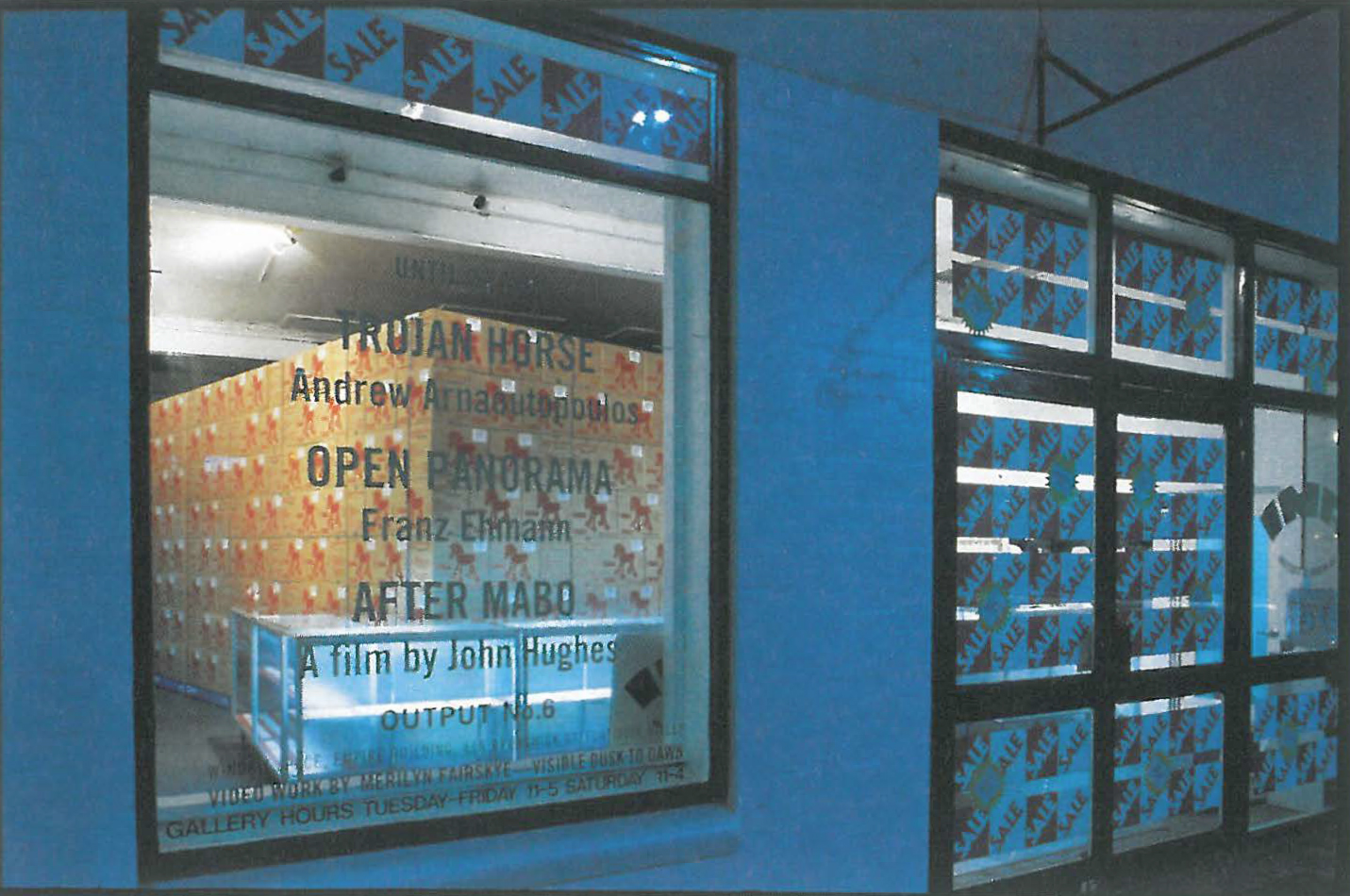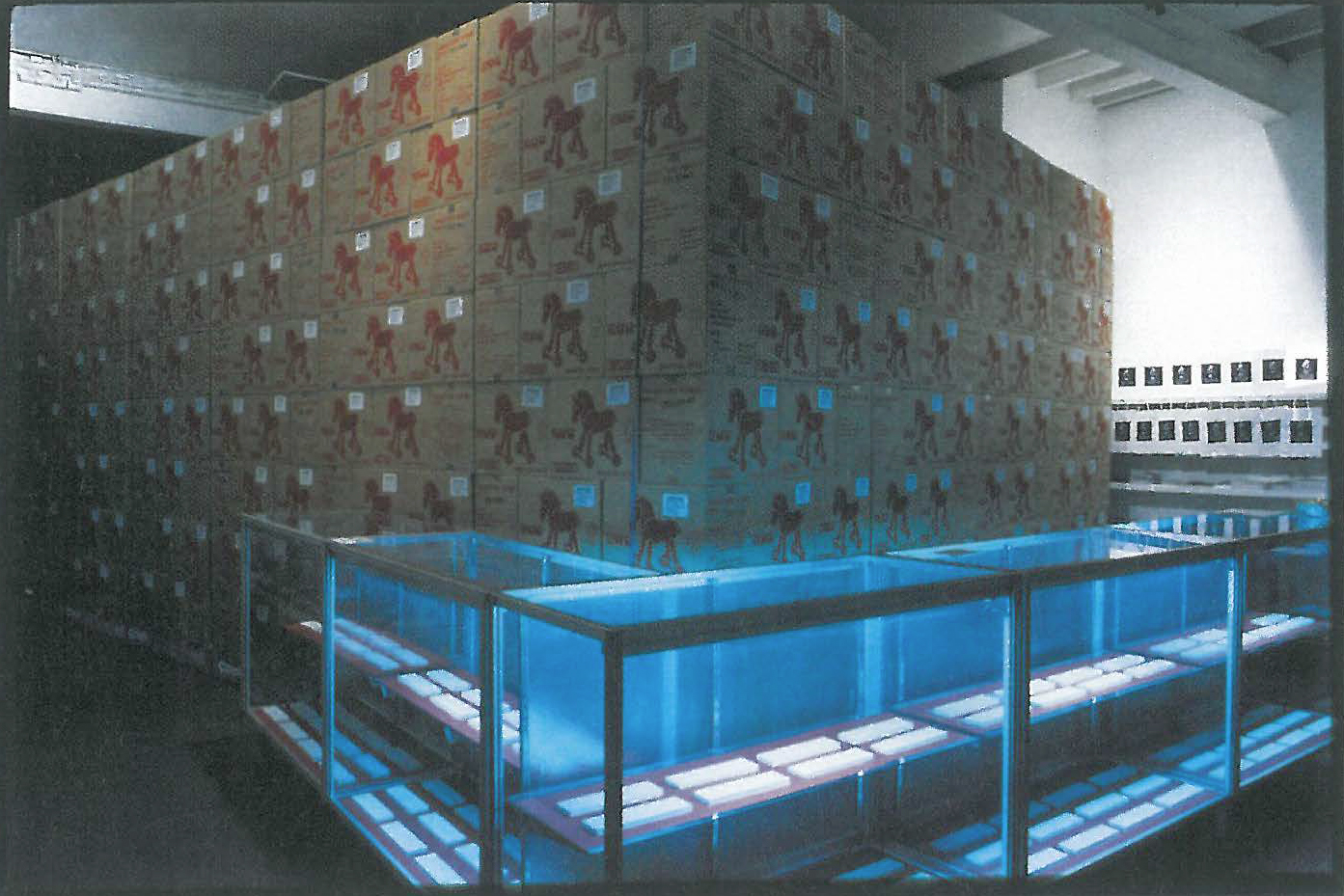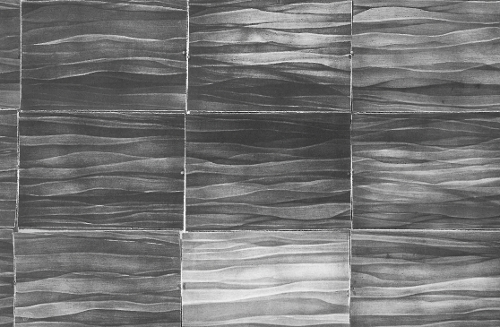
Trojan Horse is Arnaoutopoulos' second major installation at the IMA that addresses the controversial removal of the Elgin Marbles from the Parthenon in 1801 and their relocation to the British Museum. The Marbles have remained there since 1816 despite pleas for their return to the temple of Athena Parthenos on Acropolis Hill in Athens. This particular exhibition focuses on the relationship between museums and their merchandise by using the British Museum and their souvenir industry (generated by these Greek objects) as an example. Trojan Horse becomes a parody of the British Museum's souvenir shop. Entering Trojan Horse is like walking into another pre-GST or stock-take sale. Bright sales stickers cover the outside windows. Immediately stepping into the gallery you are met with long glass sales cabinets containing hundreds of miniature, cheap plaster Parthenon plaques, complete with tacky sales slogans and bargain prices. Behind this rises a floor-to-ceiling wall of stacked cardboard boxes ostensibly containing toy Trojan Horses. This block extends all the way to the back of the gallery space. Each empty box is professionally printed to appear as if it is an actual product. A series of British Museum souvenir bags are pinned up behind the sales counter. A small bowl of coloured marbles rests on a sales cabinet like a bowl of 'freebie' samples of the other 'marbles' on offer.
The realism and accuracy of construction of the Trojan Horse boxes give the exhibition its appeal. The gallery space becomes transformed into a shop/warehouse where one initially questions whether the horses inside do actually exist as products. The information printed on them however establishes an unlikely relationship between the British Museum and the Acropolis Museum (the recently built museum on Acropolis Hill) and points towards the real conflict that exists. Arnaoutopoulos questions the apparent disregard for the value and significance of a culture's original artworks through mass-produced copies. As Holly Arden puts it in her catalogue essay:
The shop has turned Athena's temple, a one-off masterpiece into a ten-a-penny object for the mantelpiece. Arnaoutopoulos highlights the conflicting loyalties of the Museum, both to art and to capitalism

Do we too easily accept these 'necessary' conflicts within the museum and art worlds? Does an art object's worth have to be tied in with how much income it can generate? A passer-by entering the exhibition was overheard asking the gallery attendant how much the Trojan Horses were. Expecting the boxes to be full of miniature horses as claimed, this viewer seemed half-convinced that these pieces existed and that the gallery may have been trying to sell them for dirt-cheap prices. Although the toy Trojan Horses were in fact a 'myth', I was informed that the miniature plaster plaques were indeed for sale and that some had already been sold.
Perhaps our capitalist society has already conditioned many of us to believe that everything is up for sale regardless of obvious ethical implications of these exchanges.
Trojan Horse references the colonial act of bringing home, unpacking and displaying the trophies of the empire. Issues concerning the original ownership of the artworks are brought to mind. Arden points out the global significance of Arnaoutopoulos work, "echoing similar disputes around the world over the 'looting' of cultural property, often by Britain". Obvious reference is made to the removal of sacred artefacts of Indigenous Australians by Europeans with a lack of regard for the people or their culture.
The stacked cardboard boxes also carry a positive message through their use of the Trojan motif. They come complete with a consignment address to the British Museum and a sender's address from the Acropolis Museum. Arnaoutopoulos has tried without success to exhibit these Trojan Horse boxes as a site-specific installation outside the British Museum. There is a direct parallel between this action and the placing of the original Trojan Horse outside the gates of Troy. As Arden states,
The Trojan Horse, an instrument of war used by the Greeks to gain access to Troy, symbolises confrontation with the museum.
In a similar way to the traditional story, the Trojan Horse boxes illustrate the Greek tradition of taking back what was stolen. The exhibition commentary points out that this might not be through something physical but through "the active handing on of myths and stories". This parallels what is being done throughout the world by indigenous peoples to preserve the significance of their cultural artefacts and mythologies.












